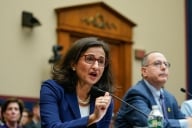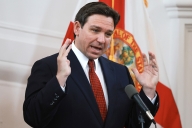You have /5 articles left.
Sign up for a free account or log in.

bearsky23/Getty Images
After years of discussion and debate about offering free community college across the United States, what once seemed unlikely is now as close as it’s ever been to being a reality. House Democrats have provided a look into how the program would work in practice, though experts say it may still need some tweaks between now and its final passage.
Called America’s College Promise, a tuition-free community college plan is a provision in the upcoming Build Back Better Act currently being crafted in Congress by Democrats. The $3.5 trillion legislation is expected to pass via a procedural process called budget reconciliation, meaning it won’t require any Republican support to make it to President Biden’s desk.
The bill includes other higher education provisions, such as increased Pell Grants, investments in historically Black colleges and universities and other minority-serving institutions, and a grant fund to support college completion and retention efforts. But for many, America’s College Promise is the marquee piece of the legislation.
“I’m pleasantly shocked and surprised that we’re at the moment where there’s real legislation around a national free college plan,” said Michelle Miller-Adams, a political science professor at Grand Valley State University and researcher at the Upjohn Institute. “A few years ago, I certainly would not have predicted this.”
More in The Key Podcast
This week's episode of Inside Higher Ed's news and analysis podcast dissects various aspects of the Build Back Better Act, including America's College Promise. Click here to listen.
Here’s how the program would work: states must opt in to participate in the program, which will be funded based on a federal-state partnership. The federal government will provide 100 percent of the grant for 2023-24, the first year of the program, and its share will decrease by 5 percent each subsequent year. States will have to make up the difference -- so for the second year, states will be required to chip in 5 percent of the subsidy. By 2027-28, the last year of the program in the legislation, the federal government will cover 80 percent of the grant and states will cover 20 percent.
But the amount of the grant won’t be based on how much states actually charge for tuition, since systems for funding higher education vary between states and some charge much higher tuition prices than others. So the legislation is going to give every state the same amount of money per student, regardless of whether or not it’s the same as what it’s currently charging, said Kevin Carey, vice president of education policy and knowledge management at New America. That amount will be calculated based on the median resident tuition and fees per student among all states -- which may or may not cover the entire cost of community college, depending on the state.
In return, states will have to set their tuition and fees to $0 for every student who attends a community college -- which is defined in the legislation as a public institution where the highest degree or the most predominant degree award is an associate degree. The states will also have to ensure that they maintain the level of fiscal support and need-based financial aid that they have provided to institutions for the three preceding years.
The bill aligns with what has been proposed for a tuition-free community college program in the past, said Mark Huelsman, a policy fellow at the Hope Center for College, Community, and Justice.
“They all rely on the same basic contours that the federal government foots most of the money and then states maintain investment and kick in the rest,” Huelsman said. “I think the federal match and the federal investment here is unabashedly a good deal for states. The incentive is very strong for them to participate, in terms of the amount of investment that they get.”
But Miller-Adams isn’t sure if the investment is enough to convince states to opt in to the program, especially since they’ll eventually have to put up 20 percent toward the grants.
“I think that’s going to be enough to lead a bunch of states to say no,” Miller-Adams said. “Sometimes, for purely political reasons, states are going to say no in the same way they did with Medicaid expansion. They have to make the pot so sweet that it’s an easy yes.”
The cost of the overall package may be a barrier to sweetening the pot. Some moderate Democrats, like Senator Joe Manchin of West Virginia, have already come out against its current $3.5 trillion price tag. And Democrats are already trying to fit a lot of priorities into the legislation.
“I think there are some real concerns about whether there’s enough money in the bill to make good on the promise,” Miller-Adams said.
It’s not yet clear how much America’s College Promise will cost by itself, but House Education and Labor Committee Democrats have said that tuition-free community college, increased Pell Grants, grant programs to train teachers and targeted investments in HBCUs and MSIs will altogether cost $111 billion.
It may seem like a lot of money, but it’s necessary to make up for declining investments in higher education in the past, said Huelsman.
“It is certainly more than was being spent a decade ago, but in terms of correcting the historical scale, it’s not that much,” Huelsman said. “People are throwing big numbers out there and saying, ‘We’ve never spent this much money before.’ And that’s great. We need to spend a lot more.”








